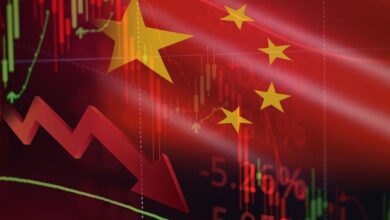Navigating the Complex Landscape of Semiconductor Manufacturing Amid Regulatory Actions

The United States has recently escalated its regulatory oversight over key players in this sector, particularly targeting China’s Semiconductor Manufacturing International Corp. (SMIC) and telecommunications giant Huawei. This development marks a significant turn in the ongoing technological rivalry that has far-reaching implications for the global chip industry. At the heart of this issue is the US government’s suspension of shipments from American suppliers to SMIC’s most advanced factory, a move that directly impacts the production capabilities of the company. This decision was triggered by the production of a high-end semiconductor for Huawei’s Mate 60 Pro smartphone, a product that represents China’s most advanced chip to date. The Commerce Department’s actions signal a strategic shift, emphasizing the critical nature of semiconductors and the US’s intent to curb the flow of advanced technology to these Chinese firms.
The suspension has affected SMIC South, a unit that has been a significant recipient of sophisticated chip making materials and parts. Companies like Entegris, a key supplier in the semiconductor manufacturing process, have confirmed the cessation of shipments in compliance with the Commerce Department’s directive. These suppliers are navigating a tightening landscape of international trade regulations, which are increasingly influencing the operations of the chip industry. The Chinese embassy in Washington has voiced its opposition to these measures, labeling them as “economic bullying” and advocating for an end to what it perceives as the suppression of Chinese companies. This sentiment reflects the broader tension between the US and China, where national security concerns are often at the forefront of trade and regulatory decisions.
The Biden administration’s enforcement of trade restrictions on SMIC and Huawei is part of a larger policy effort to limit the technological advancements of these companies. Both have been placed on a trade restriction list, with Huawei’s addition in 2019 stemming from alleged sanctions violations and SMIC’s in 2020 due to purported connections to the Chinese military. These restrictions, previous allowances had enabled certain US goods to reach the two firms, allowing them to maintain their operations and development.
The unveiling of the Mate 60 Pro by Huawei has been a catalyst for the recent enforcement actions by the Commerce Department. The device’s advanced chip technology is seen as a direct challenge to US efforts to restrict China’s semiconductor capabilities. This has led to increased scrutiny of the chip’s technology by the Biden administration, highlighting the strategic value of semiconductors in the global technology landscape. Critics within the US, such as Republican Congressman Michael McCaul, have voiced concerns over the timeliness and adequacy of the government’s response. As the chair of the Foreign Affairs Committee, McCaul has questioned the effectiveness of the Commerce Department’s regulatory practices in protecting national security.
The US Commerce Department’s recent regulatory actions against SMIC and Huawei are indicative of the heightened tensions within the semiconductor industry. These measures reflect the strategic imperative for the US to maintain its competitive edge in a sector that is pivotal for technological advancement and national security. As the global chip industry continues to evolve, it will be shaped by a complex interplay of geopolitical and economic forces, with industry participants navigating an increasingly challenging environment.
Source link



